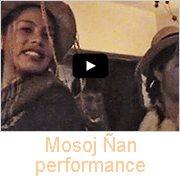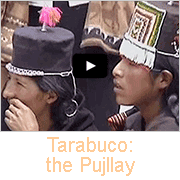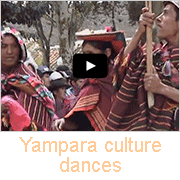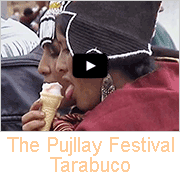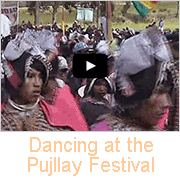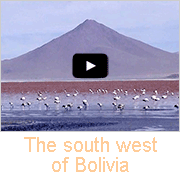Videos of Culture and landscape, Bolivia
Culture and landscape of Bolivia
Bolivia has the greatest percentage of indigenous inhabitants among the countries of South America. About 60 per cent of the people are of true Indian ancestry, and mestizos (people of mixed white and Indian origin) make up about 30 per cent of the population. As a result, it has a unique culture, mixing Spanish influences with its native Amerindian beliefs, practices and music.
Mosoj Ñan, a Quechua word meaning New Path, is the name of a Folklore group from Potosí; they are well known, have recorded widely and perform “Potocchi”, dancing and singing during “peña” performances for locals and tourists.
Pujllay is a Quechua word, meaning “to play or dance” and can be interpreted as “happiness”. It is the name of a festival taking place every year on the third Sunday in March in Tarabuco, about 65 kilometres east of Sucre in Chuquisaca. It is the centre of the “Yampara” culture with its bright and colourful costumes. During the Pujllay ceremony, a large wooden tower (the “pukara”) is erected, covered and surrounded to its top with bread, fruit, a baked sweet called “rosquetes”, and agricultural products. It is the end of the rainy season, harvest time: it is an offering to “Pachamama”, Mother Earth, and its fertility.
The Pujllay also commemorates a battle that was won over the Spaniards. The dancers in their colourful costumes wear the “Montero”, a headdress resembling helmets used by the Spanish conquistadors and “gallu-gallu”, jangling spurs; they do a stamping dance around musicians with large flutes, pan-flutes and drums. There are also groups without those colourful costumes, performing what looks like a Spanish-inspired dance with rapid foot-tapping, accompanied by guitar playing and singing. Groups from the various villages present themselves in the town centre and then march off to the ceremonial ground where they will dance around the pukara for hours. The fruit and other foods are shared among everyone.
A great trip is from the town of Uyuni across the Salar de Uyuni, the world’s largest salt flat at an altitude of 3,650 metres, with its Hotel Luna Salada, built entirely out of salt blocks, inside and out. Then on to the village of San Juan and the high Altiplano, at the height of over 4,000 metres, a flat region of spectacular, surreal and treeless landscapes, hills and high volcanoes, like Mt Ollagüe with an elevation of 5,868 metres; stunning lakes further on, Laguna Cañape and Laguna Colorada, a salt lake at 4,278 metres, with flamingoes inhabiting its shores. Around 50 kilometres further south is the geothermal area of Sol de Mañana at an elevation of approximately 4,800 metres, with its bubbling mud pools, geysers and fumaroles. The journey continues to Laguna Verde and ends at the village of Alota.



